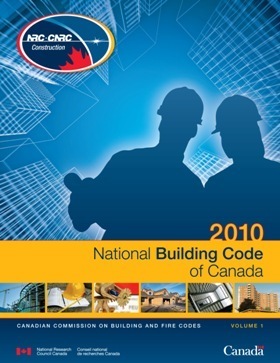The new release of the Canadian National Building Code (NBC) has become effective early in 2016. This code release contains a significant change, and an improvement, in the requirement for minimum soundproofing between dwelling units.
More...
The new code replaced Sound Transmission Class (STC) requirement with Apparent Sound Transmission Class (ASTC) for wall assemblies between dwelling units.
NBC Changes to Apparent Sound Transmission Class
The old requirement of STC 50 is replaced with the new requirement of ASTC 47. Apparent Sound Transmission Class (ASTC) is defined in ASTM specification E336. Field measurements can verify this value since it includes noise transmitted through flanking paths always present in a filed situation (but not in a lab test of STC value). Even though the new number is lower than the old STC value, it is an improvement over the old requirements since the ASTC value more accurately represents the situation to which occupants of spaces are exposed. ASTC value can be accurately verified in the field, thus making builders more accountable for the actual performance of new buildings.
Consequences of changing to apparent sound insulation class
There are several significant consequences of this seemingly minor change. Some of these are:
- Construction contracts in the future will include verification of the ASTC value as a part of the new building's acceptance process. This will ensure that customers will get what their contract requires, and builders will be responsible for fixing deficiencies.
- The new NBC code defines three methods for certifying compliance with this requirement. Only one of the methods requires field testing, but it is the most reliable method and will likely be included in many construction contracts. This means that builders will have to budget for the cost of field tests and contingency funds in case these tests fail.
- This requirement will create a business opportunity for acoustic test companies, soundproofing companies, soundproofing consultants, building acoustics consultants, and acousticians.
Even thou this revision to the NBC is a significant improvement, it needs to catch up on another important acoustic property of buildings. That is Impact Insulation Class (IIC) for floors/ceiling partitions (as defined in ASTM spec E989). The code does not yet specify this requirement. This change is being planned for the next release of the code in 2020.
To request a no-obligation consulting quote in the Toronto area from the author of this article, please click on the button below.
We always appreciate your feedback. Please use the form below to submit your comments.
